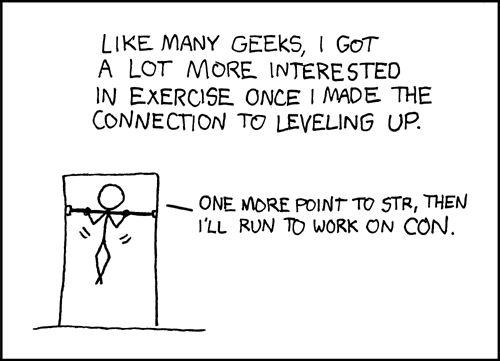I gave up multitasking a long time ago. I realized that I’m not good at it, and started paying attention so that I could notice when I was doing it and stop.
As an aside, I should mention that there’s now quite a bit of research to show that nobody is good at multitasking, and that the people who think they’re good at it are even worse than the people who know they’re not.
Even though I’m more efficient doing one thing with complete focus and then going on to the next thing, that practice alone doesn’t solve the underlying problem that tempts people into multitasking: How else can I get everything done?
Half of the answer to that is the drearily obvious, “You can’t. What you can do is get a whole lot done, if you quit frittering away your time on trivial, pointless stuff, and apply your time doing the most important stuff.”
I know some people who are pretty good at that, and they are routinely way more productive than me or most other people.
But there’s more to it than that. Katy Bowman has been talking about one useful practice, suggesting that you “stack your life” by accomplishing multiple goals at once—something that sounds suspiciously like multitasking, but really isn’t.
I’ve actually been thinking about this quite a bit, wanting to articulate the difference for my own sake if no one else’s. My take on it, is that it has to do with what the limiting resource is for each activity.
There are a lot of limiting resources. Your hands are one—they can really only do one thing at a time (although my mom used to read, fan herself, and drink lemonade all at the same time, and felt like she was being very efficient). Location is another—something that can only be done in the kitchen can’t be stacked with an activity that can only be done in the garage or the gym or the grocery store. Other people are another—something that requires the presence of another person can’t be done without him or her. (Though it’s not that simple, as sometimes you can stack up the other people and get multiple things done with multiple people.)
In multitasking, the limiting resource is your attention, and what’s unique about attention is that many activities can be done with partial attention. That experience tempts us into thinking that attention is more divisible than it really is.
Washing dishes only takes partial attention, meaning that you can listen to the radio or a podcast and get full benefit out of both activities.
Driving is a more complex example. We know that driving sometimes requires your full attention. This is why talking on the phone is unsafe to do while driving—talking on the phone requires enough of your attention that doing so reduces your competence at driving as much as getting drunk does. (Talking to someone in the car with you is much less unsafe, because that person can see when the road conditions are such that you need your full attention and shut up. Just listening to something—the radio or a podcast—does not seem to cause the same problem, probably for reasons having to do with deep structures in the brain that prioritize social interactions.)
Even though there are plenty of activities that can be done with partial attention, most important activities require full attention to be done well.
Writing a blog post can be done with partial attention, but when I try to do it while simultaneously listening to a podcast, checking my twitter and facebook feeds, chatting with a friend on-line and another in-person, and answering the occasional email message, I don’t do it as well.
As I’ve worked to apply this lesson—noticing when I’m multitasking and then refocusing on the main thing I’m doing—I’ve learned something else: Many activities that don’t require full attention turn out better when I give it to them anyway.
Beyond that, I feel better when I give my full attention to whatever I’m doing.
It was the meditation practice that I adopted as part of my taiji practice that taught me this. First, it taught me the skill of paying attention, then it taught me that paying attention to what I was doing right now paid dividends, even when all I was doing was sitting or standing.
I’ve noticed it particularly with exercise. I used to distract myself from exercise with music or podcasts or games like Zombies, Run!, because I found exercise to be unpleasant drudgery that I only engaged in to the extent necessary to build and maintain a basic level of fitness. I don’t do that any more. It’s much better when I fully embody my exercise: I enjoy it more, I’m less prone to injury, and the exercise is more effective.
The more I do this—give my full attention to whatever it is I’m doing, whether it seems worthy of full attention or not—the more I find it worthwhile.
Downside: I’m falling behind on my podcast listening, because there are so few things where I feel like partial attention is all they deserve. Maybe I’ll find more, but at the moment I’m just about down to riding on the bus.
So, yes: Stack your life. If you can do one thing with your brain, one thing with your hands, and one thing with your feet all at the same time, go for it. But think twice before dividing your attention. If something is worth doing, it may well be worth your full attention, no matter how hard that makes it to get everything done.



